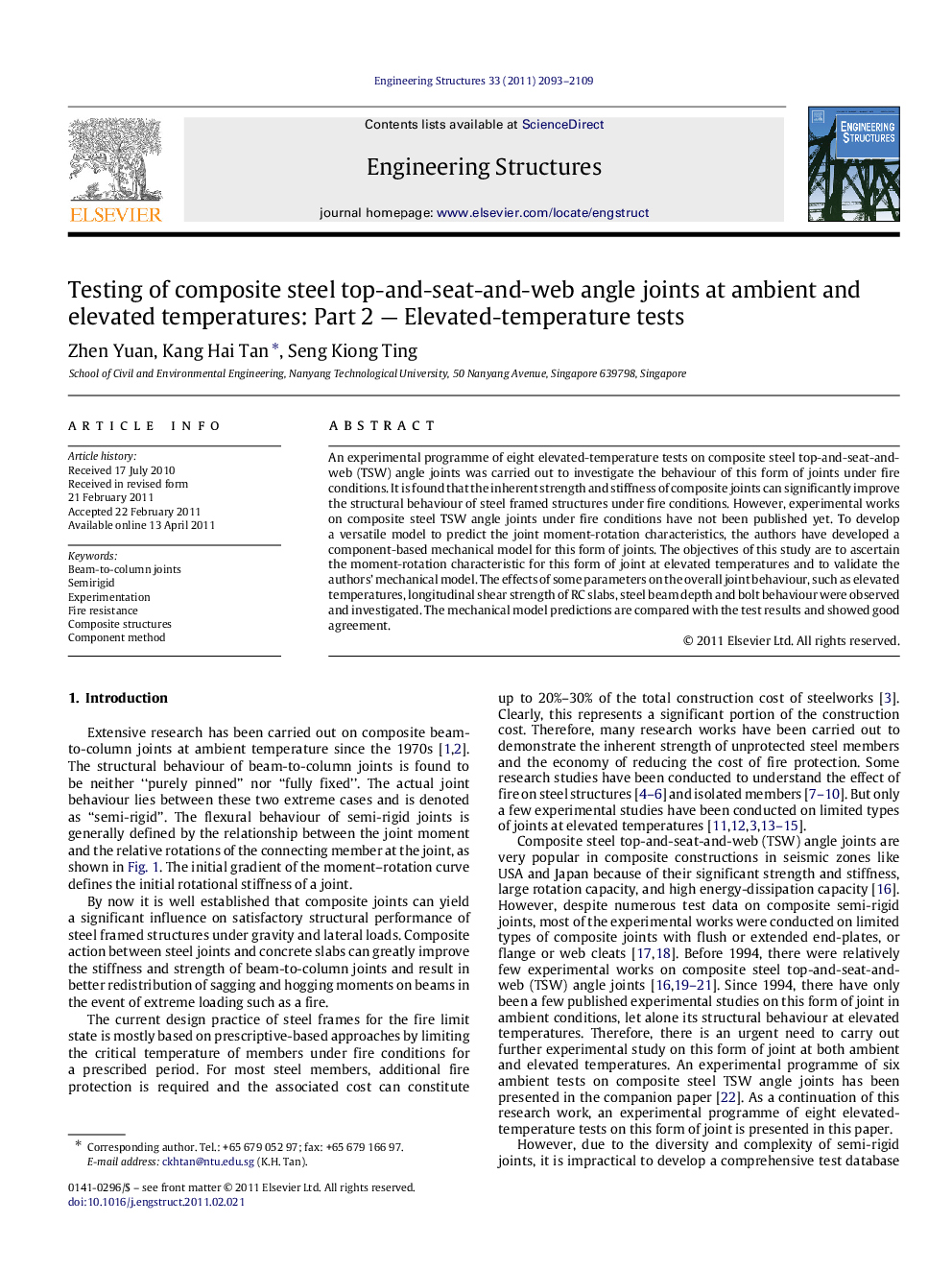| Article ID | Journal | Published Year | Pages | File Type |
|---|---|---|---|---|
| 267901 | Engineering Structures | 2011 | 17 Pages |
An experimental programme of eight elevated-temperature tests on composite steel top-and-seat-and-web (TSW) angle joints was carried out to investigate the behaviour of this form of joints under fire conditions. It is found that the inherent strength and stiffness of composite joints can significantly improve the structural behaviour of steel framed structures under fire conditions. However, experimental works on composite steel TSW angle joints under fire conditions have not been published yet. To develop a versatile model to predict the joint moment-rotation characteristics, the authors have developed a component-based mechanical model for this form of joints. The objectives of this study are to ascertain the moment-rotation characteristic for this form of joint at elevated temperatures and to validate the authors’ mechanical model. The effects of some parameters on the overall joint behaviour, such as elevated temperatures, longitudinal shear strength of RC slabs, steel beam depth and bolt behaviour were observed and investigated. The mechanical model predictions are compared with the test results and showed good agreement.
